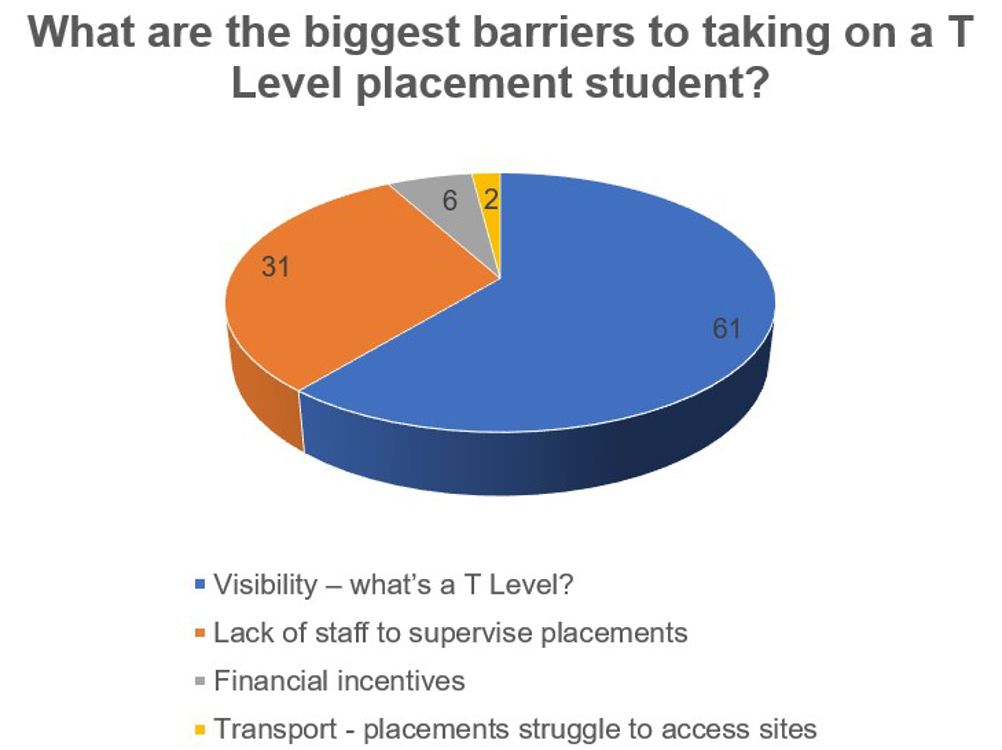
T Levels have been taught since September 2020 as part of government plans to reform skills and technical education for post-GCSE students.
Seen as a technical alternative to A levels, the number of T-Level qualifications has grown to 15 in sectors including engineering and manufacturing.
Developed with UK businesses to better prepare students for work and higher-level study, the two-year courses combine classroom theory with practical learning and an industry placement of at least 315 hours, or approximately 45 days. Between 27 May 2021 and 31 July 2022 an employer could claim £1,000 for every T Level student they took on placement.
Now, Make UK and EngineeringUK estimate that 43,500 placements will be needed for students taking engineering and manufacturing T Level, but only nine per cent of suitable employers are hosting placements and just 12 per cent plan to in the coming year.
Employers do, however, see T Levels as having the potential help solve vocational pipeline issues, with 55 per cent open to taking on an industry placement in the future.
In their report, Make UK and EngineeringUK set out a number of recommendations, aimed mainly at the Department for Education, to increase the uptake of placements in engineering and manufacturing companies.
These include extending the number of hours that a placement can take place in a simulated work environment, reinstating the £1,000 financial incentive per placement for SMEs, and clear ‘progression maps’ for T Level students and employers.
Has your company faced barriers to taking on a T Level placement? Let us know by leaving your thoughts in Comments below. All comments are moderated.











McMurtry Spéirling defies gravity using fan downforce
Ground effect fans were banned from competitive motorsport from the end of the 1978 season following the introduction of Gordon Murray's Brabham...